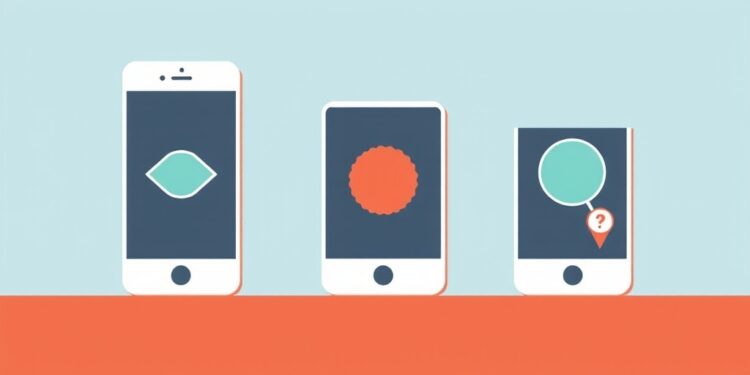In an age where our smartphones have become extensions of ourselves, their omnipresence raises significant questions about their impact on productivity and focus. With the average person checking their phone every four to six minutes, these devices present a formidable challenge to maintaining concentration in professional settings. New research highlights that merely distancing ourselves from smartphones may not be an effective solution to reducing distractions or enhancing productivity. The study emphasizes that the core issues stem from ingrained habits and routines rather than the devices themselves.
Recent findings published in the esteemed journal Frontiers in Computer Science probe the intricacies of smartphone use in work environments. Conducted by Dr. Maxi Heitmayer, a respected researcher from the London School of Economics, the study attempts to discern the relationship between smartphone placement and user behavior during work tasks. Rather than simply evaluating the efficacy of keeping devices out of reach, the research lays bare the complex dynamics between proximity, attention, and distraction.
The experiment featured 22 willing participants, each tasked with engaging in work activities for two consecutive days within a soundproof room. They brought with them the electronic devices typically at their disposal—a laptop and a smartphone, at a minimum. The structure of the study was remarkably simple yet insightful, focusing on two distinct scenarios defined solely by the distance between participants and their phones. In the first scenario, phones rested on the same desk as the participants, while in the second, they were positioned 1.5 meters away on a separate desk.
Interestingly, the research revealed that increasing the distance from the smartphone did result in less frequent use of the device. Paradoxically, however, this shift did not translate into greater overall focus or reduced distraction. Instead, participants redirected their attention toward their laptops—a move that did little to enhance their productivity. Both work and leisure activities remained unchanged across the two scenarios, suggesting that merely limiting access to smartphones does not appreciably mitigate the allure of distractions.
Analyzing why smartphones remain a prevalent choice for diversions, Dr. Heitmayer noted their multifunctionality. These devices serve as portals not just to social media, but also to communication with loved ones, navigation systems, alarm clocks, music players, and information sources. The comprehensive nature of smartphones makes them irresistible when users exhibit a desire to disengage from concentrated tasks. While computers can fulfill many of these roles, their comparative lack of portability and tactile enjoyment can deter users from transitioning their distractions to that platform.
Dr. Heitmayer’s research endeavors to transcend the conventional device-centric discussions, asserting that the smartphone isn’t the root of the productivity crisis. Instead, the habits we cultivate and the applications designed to sustain these behaviors deserve scrutiny. Technologies designed to capture our attention are at odds with our attempts to exercise control over our time and focus.
To effectively navigate the modern landscape of technology and distraction, Dr. Heitmayer recommends strategies such as scheduling notifications or even silent periods altogether. These small alterations can promote mindfulness concerning how users allocate their time. Nevertheless, he remains realistic about the nature of smartphone use, observing that users are prone to check their devices during any brief interlude, undermining even the best-laid plans for time management.
The underlying dynamics of smartphone usage are further complicated by the intricate battlefield waged every day by users and the corporations that design these apps. The engagement strategies devised by major tech companies leverage our intrinsic vulnerabilities and compulsive tendencies. As Dr. Heitmayer compellingly argues, the very design of these distraction-inducing features is a systematic approach to profit from our inability to resist the lure of our devices.
Looking ahead, Dr. Heitmayer stresses the importance of safeguarding users, particularly vulnerable demographics such as young people. The duality of smartphones as facilitators of creativity and learning cannot be overlooked, yet their addictive potential poses significant challenges that merit attention. The study’s findings spotlight an urgent need for a collective reevaluation of how technology is woven into our daily lives and how we can maintain a healthy relationship with these powerful tools.
In conclusion, the research suggests that simply removing a smartphone from direct reach is not a silver bullet for enhancing productivity or focus. Instead, the solutions lie in recognizing and modifying our behavioral patterns and the design of the applications we use every day. As we gravitate increasingly toward an all-digital lifestyle, understanding these dynamics will be vital for fostering environments conducive to success in both personal and professional arenas. It is not merely about distancing ourselves from distractions; it is fundamentally about altering the habits that render us susceptible to those distractions in the first place.
The intersection of technology, habit formation, and productivity is an ongoing conversation that will become even more prominent as we traverse an increasingly connected world. As we continue to explore this space, the findings of this study serve as a crucial reminder of the need for intentional engagement with our digital lives rather than passive consumption.
Subject of Research: People
Article Title: When the Phone’s Away, People Use Their Computer to Play Distance to the Smartphone Reduces Device Usage but not Overall Distraction and Task Fragmentation during Work
News Publication Date: 28-Mar-2025
Web References: DOI: 10.3389/fcomp.2025.1422244
References: Frontiers in Computer Science
Image Credits: N/A
Keywords: smartphone usage, productivity, distraction, digital habits, technology impact, mindfulness, attention, behavioral patterns.




